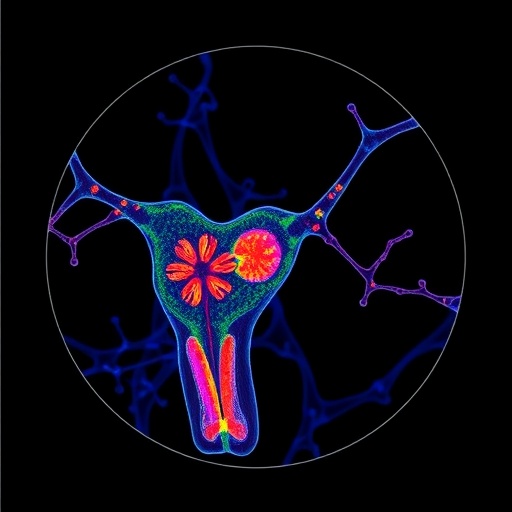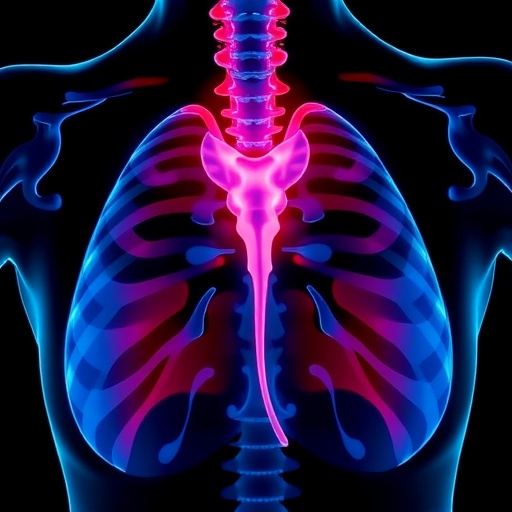Mathematical modeling is revolutionizing the global fight against cervical cancer, translating complex epidemiological data into actionable strategies capable of steering public health policy toward elimination. As the world grapples with cervical cancer’s persistent threat—particularly in low- and middle-income countries—these sophisticated simulations illuminate how coordinated efforts in vaccination, screening, and treatment can collectively expedite the path to eradication within decades in affluent regions and over the next century on a global scale. Far beyond serving as predictive tools, these models act as vital decision-making frameworks, empowering policymakers to craft cost-effective, equitable, and context-specific interventions that align with the World Health Organization’s (WHO) ambitious vision of a world free from cervical cancer.
Cervical cancer continues to be one of the foremost causes of cancer-related mortality among women worldwide, responsible for hundreds of thousands of deaths annually. Despite the proven efficacy of preventive measures such as human papillomavirus (HPV) vaccination and cervical screening protocols, many countries struggle with systemic issues such as healthcare access limitations, inconsistent vaccine supply, and significant data insufficiencies. These challenges obstruct progress toward WHO’s “90-70-90” targets envisaged for 2030, which aim for 90% of girls vaccinated against HPV, 70% of women screened by age 35 and 45, and 90% of women with precancer or cancer receiving appropriate treatment. Addressing these obstacles demands a scientific paradigm that transcends mere observation, enabling predictive insight and strategic foresight.
A landmark perspective recently published by researchers from the Chinese Academy of Medical Sciences and Peking Union Medical College in the peer-reviewed journal Cancer Biology & Medicine provides an extensive overview of the pivotal role mathematical modeling has played in shaping cervical cancer control policies worldwide. This comprehensive review chronicles the evolution of modeling efforts—from initial feasibility analyses in Australia to sophisticated global simulations coordinated by WHO-led initiatives—underscoring China’s expanding leadership in utilizing evidence-informed modeling to tailor national strategies in concert with global elimination goals.
The transformative power of mathematical modeling has been especially evident over the past decade, reshaping the global landscape of cervical cancer prevention. Early models from Australia projected that cervical cancer elimination could realistically be achieved within two decades given sufficiently high coverage of HPV vaccination combined with systematic screening. These encouraging findings catalyzed coordinated research efforts, culminating in the establishment of the WHO Cervical Cancer Elimination Modeling Consortium. This Consortium integrates outputs from three dynamic transmission models—Harvard, Policy1-Cervix, and HPV-ADVISE—to generate robust projections for 78 low- and middle-income countries, elucidating the synergistic effects of vaccination and screening. Their model outcomes reveal that while vaccination alone can reduce cervical cancer incidence by nearly 90%, achieving elimination requires the addition of at least two lifetime screenings, emphasizing the necessity of integrated prevention frameworks.
China’s case study exemplifies how country-specific modeling can guide evidence-based policy formulation. Projections indicate that, depending on the pace of intervention scale-up, China could accomplish cervical cancer elimination between the 2040s and 2060s. This outcome could prevent upwards of 15 million cases and yield healthcare cost savings exceeding $20 billion. Through modeling, critical insights have emerged identifying the prioritization of vaccination for girls aged 9 to 14 and the adoption of innovative screening modalities like HPV self-sampling as both cost-effective and equitable strategies suited to diverse population contexts. Furthermore, the recent introduction of the Cervical Cancer Elimination Planning Tool—developed collaboratively by the University of Sydney and the International Agency for Research on Cancer—offers developing countries an accessible means to translate complex modeling data into actionable, evidence-based roadmaps toward elimination.
According to Dr. Li Zhang, a lead corresponding author of the study, mathematical models offer governments unparalleled clarity regarding what can realistically be achieved. “These models distill intricate epidemiological and operational data into concrete pathways for policymaking,” Zhang explains. “They show how limited resources can be optimally utilized to save the maximum number of lives. In China, modeling has already been instrumental in identifying vaccination and screening strategies that are feasible within existing healthcare infrastructure and supply constraints. Yet, models are only the beginning; transforming these insights into sustained policy action and equitable program delivery will ultimately determine success.”
The burgeoning role of modeling heralds a new era in global public health strategy, particularly for cervical cancer. By precisely quantifying the impacts of varying combinations of vaccination, screening, and treatment interventions, models inform the design of elimination programs that are not only effective but also economically sustainable across diverse healthcare system contexts. For low- and middle-income countries grappling with resource limitations, tools like the Elimination Planning Tool are invaluable, bridging the divide between scientific research and practical decision-making to ensure interventions are both inclusive and measurable.
Looking ahead, advancements in artificial intelligence stand to further enhance the accuracy and efficiency of cervical cancer screening, complementing existing vaccination efforts. Concurrently, the development of robust health data systems will underpin dynamic real-time monitoring and adaptive policy adjustments, fostering agile responses to emerging challenges. Strengthening global alliances and fostering inclusive, cross-national collaborations remain critical to maintaining momentum, accelerating innovation dissemination, and ensuring equitable access to lifesaving interventions worldwide.
In sum, mathematical modeling has transitioned from a theoretical exercise to a cornerstone of cervical cancer eradication efforts, embodying a data-driven approach poised to transform an ambitious vision into a tangible, achievable reality. The integration of modeling insights into policy, combined with technological innovation and international collaboration, promises to usher in a future where cervical cancer becomes a relic of the past, saving millions of lives and alleviating healthcare burdens on a global scale.
Subject of Research: Not applicable
Article Title: Modeling cervical cancer elimination: a pathway to inform policy decisions
News Publication Date: 6-Oct-2025
References:
DOI: 10.20892/j.issn.2095-3941.2025.0387
Image Credits: Cancer Biology & Medicine
Keywords: Cancer
Tags: cervical cancer elimination strategiescervical cancer screening protocolschallenges in cervical cancer treatmentcost-effective interventions for cancerepidemiological data in cancer preventionglobal health initiatives for womenhealth equity in cancer carehealthcare access and cervical cancerHPV vaccination impactmathematical modeling in public healthpublic health policy and decision-makingWHO 90-70-90 targets





